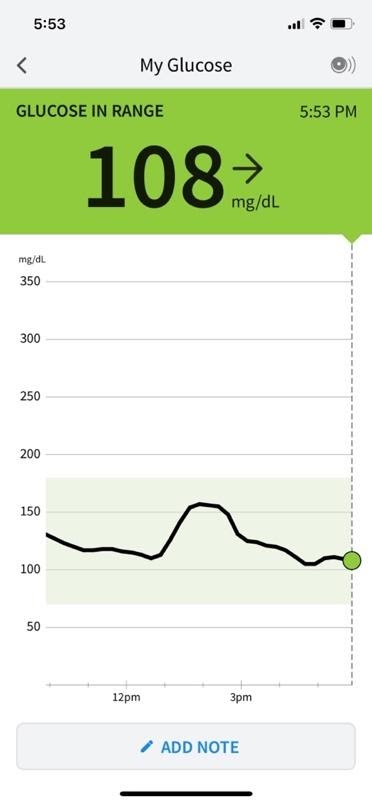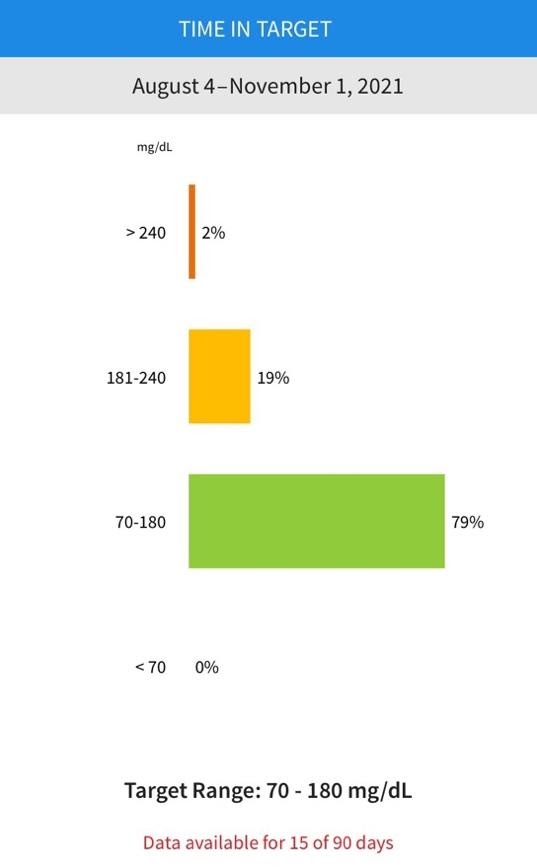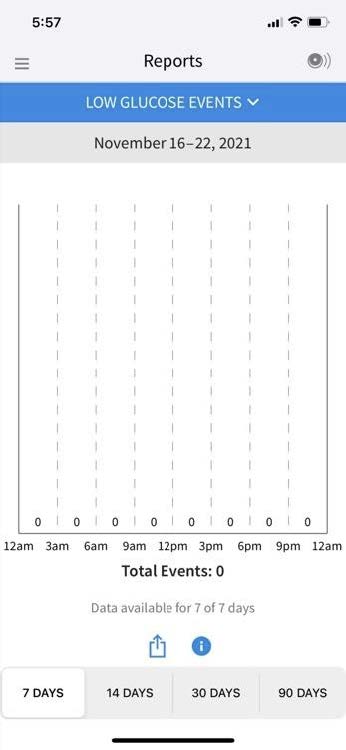Wearing a continuous glucose monitor (CGM) can be a useful tool to help you keep your blood sugar in target. While a CGM can show you where your blood sugar is at any point in time, it also helps you identify trends. You can see how certain non-food items, like medications, caffeine, and stress, affect your blood sugar.
Here’s a quick breakdown of the different numbers and reports and how to use them.
Sensor Glucose Readings
This is the number that appears on your phone, or reader after you scan your CGM. The number tells your current blood sugar level. The arrow shows whether your blood sugar is trending up, down, or staying steady. The goal is to keep the number between 70 and 180 as much as possible. If it reads below 70, double-check it with a blood glucose meter. CGMS can sometimes show false lows.

Daily Patterns
This report overlays your blood sugar levels from multiple days to show your overall blood sugar. The black line in the middle shows where your blood sugar reads most of the time. The lighter shading shows the extremes of your blood sugar readings. Ideally, aim to keep all shaded areas, even the light ones, in the 70-180 range to avoid big swings in blood sugar and possible health complications.

Time In Target
Time in target, also called Time In Range, shows how much time was spend in the target range of 70-180. Our goal is to keep you in that range at least 70% of the time.

Low Glucose Events
This report shows how many times your blood sugar was less than 70 for longer than 15 minutes. Ideally, we want to avoid these events as much as possible. This is more of a concern if you take certain medicines (such as insulin or sulfonylurea pills) that could lead to low blood sugar (hypoglycemia). Remember, sometimes CGMs can show false lows, always check with a blood glucose meter when your CGM shows low blood sugar.

Daily Graph
This graph shows your blood sugar levels for one day. This is a great way to see what your blood sugar does after you eat, exercise, or take medication. This can also be helpful when looking across many days. Do you see your blood sugar go up at one point each day? Why is that? is it food, stress, caffeine, etc?

A CGM is another tool you can use to help you monitor your blood sugar. While your DayTwo app helps you recognize what foods, and food combinations, are best for you, the CGM can help you identify other factors.
Keeping blood sugar levels in the target range can prevent disease complications, increase energy, reduce cravings and hunger, and so much more.